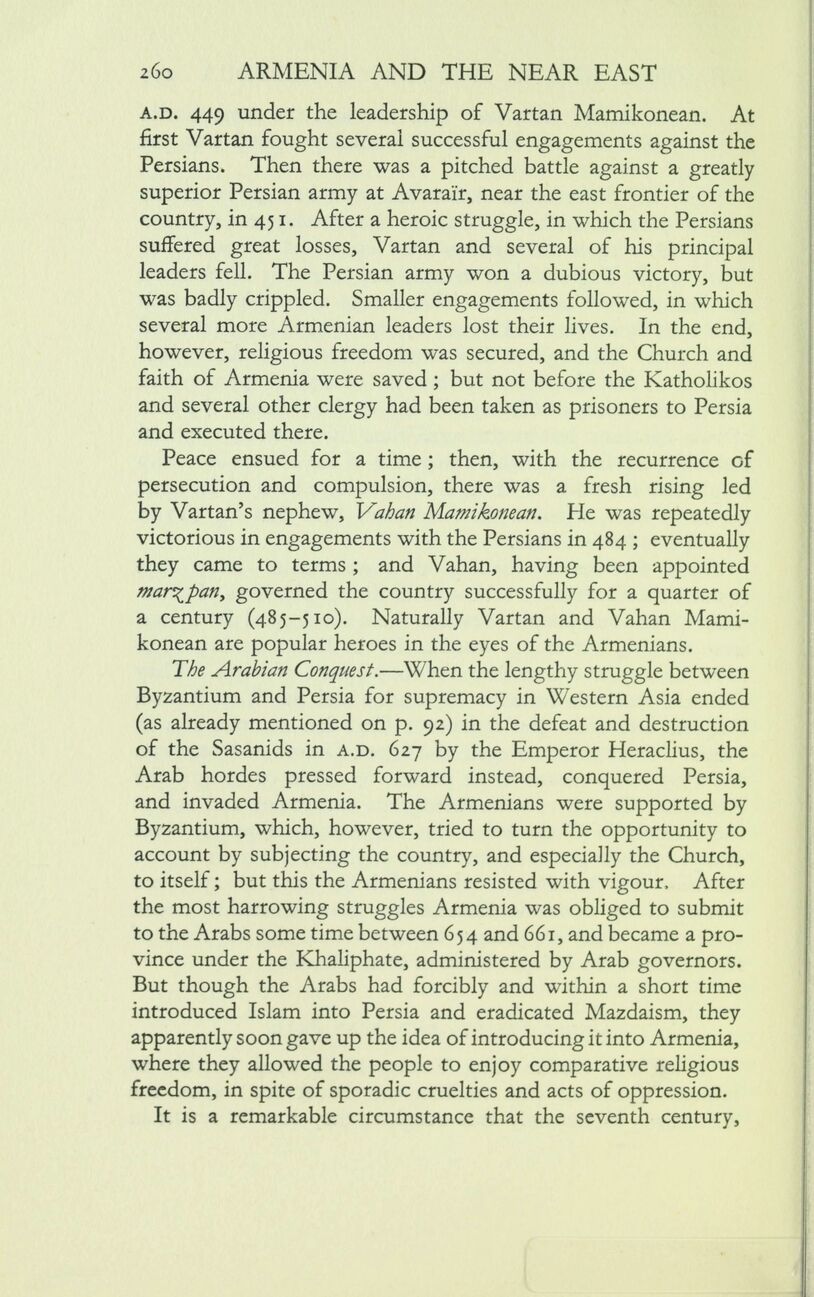
Full resolution (JPEG) - On this page / på denna sida - X. Chapters in the history of Armenia

<< prev. page << föreg. sida << >> nästa sida >> next page >>
Below is the raw OCR text
from the above scanned image.
Do you see an error? Proofread the page now!
Här nedan syns maskintolkade texten från faksimilbilden ovan.
Ser du något fel? Korrekturläs sidan nu!
This page has never been proofread. / Denna sida har aldrig korrekturlästs.
260 ARMENIA AND THE NEAR EAST
a.d. 449 under the leadership of Vartan Mamikonean. At
first Vartan fought several successful engagements against the
Persians. Then there was a pitched battle against a greatly
superior Persian army at Avarair, near the east frontier of the
country, in 45 1. After a heroic struggle, in which the Persians
suffered great losses, Vartan and several of his principal
leaders fell. The Persian army won a dubious victory, but
was badly crippled. Smaller engagements followed, in which
several more Armenian leaders lost their lives. In the end,
however, religious freedom was secured, and the Church and
faith of Armenia were saved ; but not before the Katholikos
and several other clergy had been tåken as prisoners to Persia
and executed there.
Peace ensued for a time ; then, with the recurrence cf
persecution and compulsion, there was a fresh rising led
by Vartan’s nephew, Vaban Mamikonean. He was repeatedly
victorious in engagements with the Persians in 484 ; eventually
they came to terms ; and Vahan, håving been appointed
mar^pan, governed the country successfully for a quarter of
a century (485-510). Naturally Vartan and Vahan Mami
konean are popular heroes in the eyes of the Armenians.
The Arabian Conquest.—When the lengthy struggle between
Byzantium and Persia for supremacy in Western Asia ended
(as already mentioned on p. 92) in the defeat and destruction
of the Sasanids in a.d. 627 by the Emperor Heraclius, the
Arab hordes pressed forward instead, conquered Persia,
and invaded Armenia. The Armenians were supported by
Byzantium, which, however, tried to turn the opportunity to
account by subjecting the country, and especially the Church,
to itself ; but this the Armenians resisted with vigour, After
the most harrowing struggles Armenia was obliged to submit
to the Arabs some time between 654 and 661, and became a pro
vince under the Khaliphate, administered by Arab governors.
But though the Arabs had forcibly and within a short time
introduced Islam into Persia and eradicated Mazdaism, they
apparently soon gave up the idea ofintroducingitinto Armenia,
where they allowed the people to enjoy comparative religious
freedom, in spite of sporadic cruelties and acts of oppression.
It is a remarkable circumstance that the seventh century,
<< prev. page << föreg. sida << >> nästa sida >> next page >>